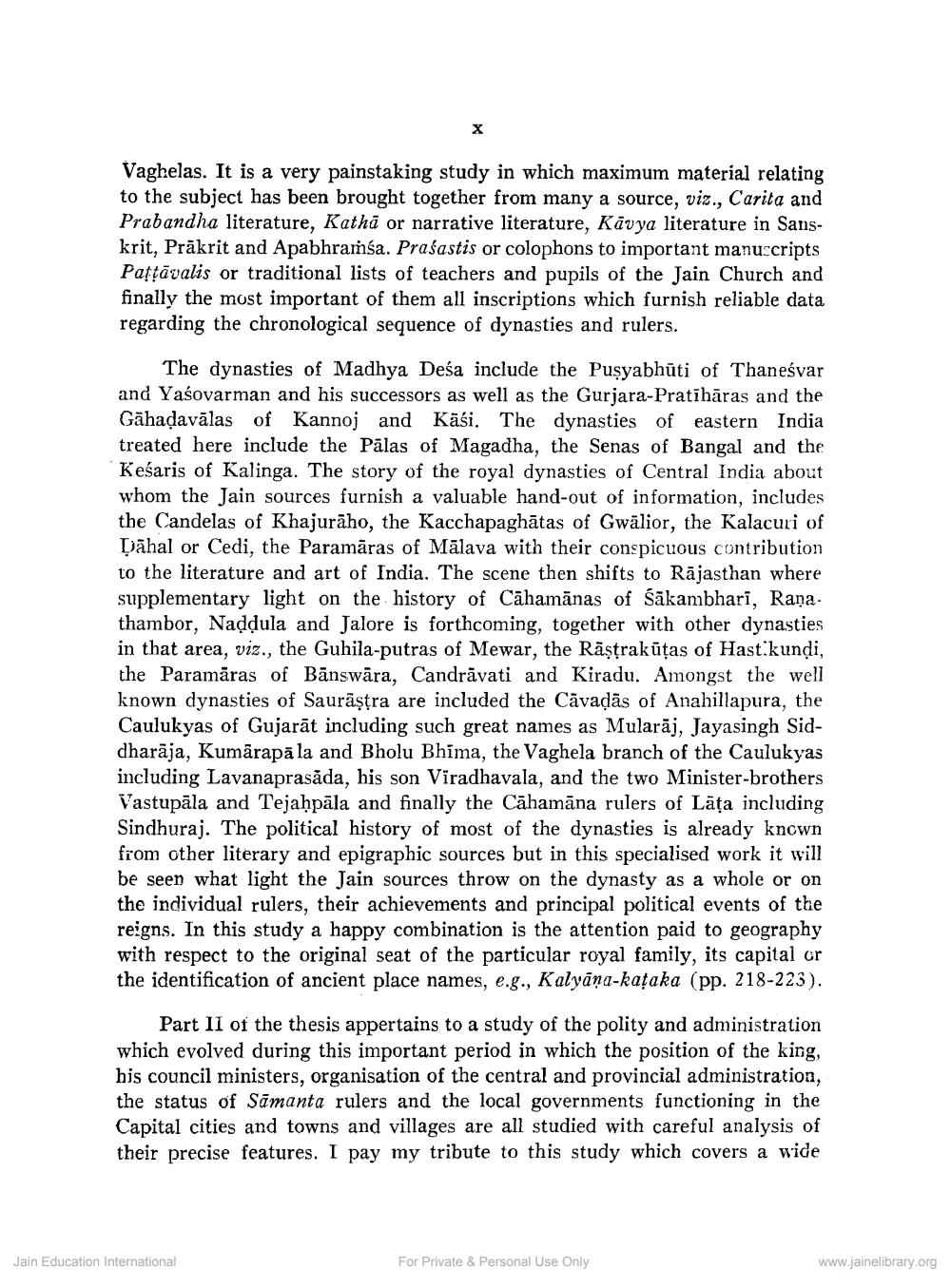________________
X
Vaghelas. It is a very painstaking study in which maximum material relating to the subject has been brought together from many a source, viz., Carita and Prabandha literature, Kathd or narrative literature, Kavya literature in Sanskrit, Prakrit and Apabhramsa. Prasastis or colophons to important manuscripts Pattavalis or traditional lists of teachers and pupils of the Jain Church and finally the most important of them all inscriptions which furnish reliable data regarding the chronological sequence of dynasties and rulers.
The dynasties of Madhya Desa include the Puşyabhuti of Thanesvar and Yasovarman and his successors as well as the Gurjara-Pratihāras and the Gahadavālas of Kannoj and Käsi. The dynasties of eastern India treated here include the Palas of Magadha, the Senas of Bangal and the Kesaris of Kalinga. The story of the royal dynasties of Central India about whom the Jain sources furnish a valuable hand-out of information, includes the Candelas of Khajuraho, the Kacchapaghātas of Gwalior, the Kalacuri of Dahal or Cedi, the Paramāras of Malava with their conspicuous contribution to the literature and art of India. The scene then shifts to Rajasthan where supplementary light on the history of Cahamānas of Sakambhari, Rana. thambor, Naddula and Jalore is forthcoming, together with other dynasties in that area, viz., the Guhila-putras of Mewar, the Răştrakutas of Hast kundi, the Paramāras of Banswara, Candravati and Kiradu. Amongst the well known dynasties of Saurästra are included the Cavadas of Anahillapura, the Caulukyas of Gujarat including such great names as Mularaj, Jayasingh Siddharaja, Kumarapala and Bholu Bhima, the Vaghela branch of the Caulukyas including Lavanaprasada, his son Viradhavala, and the two Minister-brothers Vastupala and Tejaḥpāla and finally the Cähamāna rulers of Läta including Sindhuraj. The political history of most of the dynasties is already known from other literary and epigraphic sources but in this specialised work it will be seen what light the Jain sources throw on the dynasty as a whole or on the individual rulers, their achievements and principal political events of the reigns. In this study a happy combination is the attention paid to geography with respect to the original seat of the particular royal family, its capital cr the identification of ancient place names, e.g., Kalyaṇa-kataka (pp. 218-223).
Part II of the thesis appertains to a study of the polity and administration which evolved during this important period in which the position of the king, his council ministers, organisation of the central and provincial administration, the status of Samanta rulers and the local governments functioning in the Capital cities and towns and villages are all studied with careful analysis of their precise features. I pay my tribute to this study which covers a wide
Jain Education International
For Private & Personal Use Only
www.jainelibrary.org




